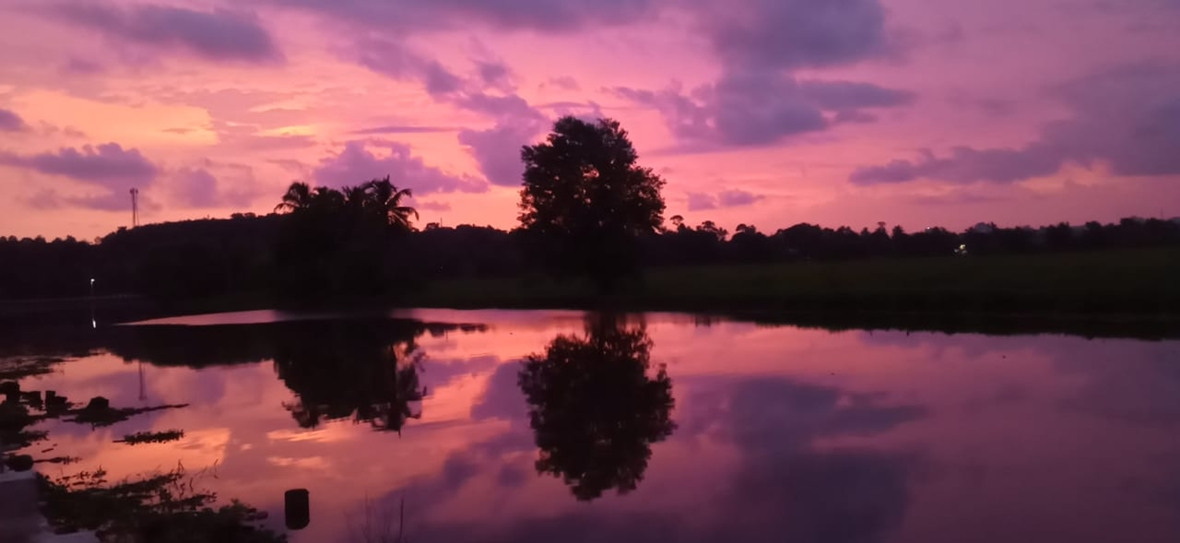It is the mystery of the imperceptible interface, the delicate border and the inevitable transit. It seems closed and confounding, but is actually open to all gates. One can take any flight to the infinite sky. The pandemic is a twilight.
FR. K M GEORGE
The sun has just disappeared below the horizon. It is twilight. My photograph of the Kodoor and the rice fields beyond is tinted pink. A deep stillness and silence settle over the surroundings. Flocks of birds seen all over the sky some minutes ago have vanished to their nesting places. Grazing cattle have returned home. No breeze. No movement .No water lily bud has opened yet. Frogs and crickets are silent. Trees and plants become dark masses, sort of gestalt images, that ignore all details.
Twilight is a passage, a transit from day’s light to night’s darkness, and also from night to day. Some sensitive observers might feel, particularly at the evening twilight, a vague but deep nostalgia, for what, one doesn’t know.
With the transition of light to darkness in the evening, or of darkness to light in the morning significant biochemical changes occur in all creatures. All plants, birds, animals and insects, both diurnal and nocturnal, respond to the change in their own ways. Humans seem to be the only species that deliberately ignores it. With artificial lights, intercontinental fast travel and unusual hours of global work style, and night-long entertainments they defy the natural rhythm of the Circadian cycle that attunes us to nature’s benevolent order.
These are joints (sandhi in Sanskrit)of time. So sandhya is the joint of light and darkness. There is an evening sandhya as well as a morning sandhya though we popularly associate the word sandhya with the evening. There is also the division of the 24-hour day into yaama of 3 hours each. So at the passage of every yaama there are prayers and rituals particularly in the monastic tradition. Umberto Eco’s celebrated novel The Name of the Rose structured on the ancient Christian monastic practice of the canonical hours or offices at a medieval Benedictine monastery.
All religions have devised special rituals or prayers for these joints of time, particularly evening, noon and morning. One may say that it is an ancient and established way of dealing with the transition that frightens human beings. Passing of time is scary because the next moment is totally unknown and unpredictable. The spiritual practice of prayers and rituals at the sandhis or joints of time may be compared to maintaining the flexibility of the joints in our body by applying balms and medicinal oils. The religious routine is understood to streamline the energy of the body and mind of the worshipper to a transcendent focus so that the uncertainty and anxiety associated with the transit of time is overcome. The scattering and chaotic effect of the passage of time in human psyche is minimised, and a sense of order is restored by the unwavering regularity of the prayers and rituals at every yaama or joint of time.
The twilight holds an elusive mystery. It is the mystery of the imperceptible interface, the delicate border and the inevitable transit. It seems closed and confounding, but is actually open to all gates. One can take any flight to the infinite sky. The pandemic is a twilight.∎